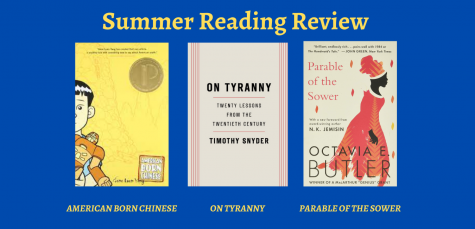Mythology, mortality, maturity: ‘Circe’ has it all
“Circe” is a novel by Madeline Miller, who will be virtually visiting Taipei American School (TAS) on Sept. 29 and 30. Other notable works by Miller include “Song of Achilles” and “Galatea: A short story.”
“Circe” depicts the life of the eponymous character, the daughter of Helios, the Sun Titan. Set during the Greek Heroic Age of mythology, the book blends a number of Greek myths into a singular adaptation, written from the perspective of Circe, who narrates the events in relation to her life. However, contrary to the portrayal of Circe as a cunning enchantress whose only desire is to see men suffer for her own entertainment — as seen in the epic “Odyssey”— Miller approaches the character of Circe with an unexpected amount of compassion.
The book starts out with the upbringing of Circe, who retreats into isolation after being disdained by both her mother and siblings. However, as the story progresses, she faces a number of adversities — each one more afflicting than the last — that result in subtle changes in how she views the mortal and immortal world until she no longer has faith in anyone around her.
An aspect of the book that stands out is the character development of Circe. Miller is able to depict each and every shift in Circe’s psychology, from the desperation she feels to please those around her to the hatred she harbors for the humans that exploited her. Because her thought processes are all clearly expressed, the line of reasoning behind her actions can be understood with ease by readers. Again and again, she is wronged by both the gods she calls family and the humans she calls friends to the point where readers themselves can sympathize with her character. Reading from Circe’s perspective immerses readers into the story and forces them to acknowledge her humanity, so much so that we see her almost as a heroine instead of the evil seductress depicted in other Greek legends, although her actions remain unchanged between the different interpretations.
Miller’s writing style consists heavily of figurative language, yet clarity is still a priority. Miller utilizes metaphors and similes to bring mystical locations such as Aiaia, the island Circe is exiled to, and the halls of Helios, her father’s abode, to life. Including imagery to describe the setting is effective, as such details are crucial to understanding the plot in full depth. However, the figurative language is never convoluted to the point where it detracts from the purpose and strays from the plot — it simply gets the point across.
Overall, the book deserves all the rave reviews it has received as it not only gives readers context into Circe’s actions in relation to other Greek myths, but it also delves so much deeper into the psychological impact of trauma. The events Circe faces are, ultimately, still prevalent in modern society, and her coping mechanisms are seen in humans nowadays as well. If a book with themes of power, self-preservation and individuality are to your liking, “Circe” is a must-read.

Erin is a staff writer in The Blue and Gold. She is a sophomore at TAS, and is excited to start Journalism to share writing pieces with the community that...


![The House in the Cerulean Sea is a heartwarming fantasy novel on love, acceptance and trust. [SHARON LEE/THE BLUE & GOLD]](https://blueandgoldonline.org/wp-content/uploads/2021/09/Book-review-475x317.png)



![Oppenheimer is based on the real life events of the Manhattan Project. [PHOTO COURTESY OF UNIVERSAL PICTURES]](https://blueandgoldonline.org/wp-content/uploads/2023/12/opp-600x316.jpeg)
![NewJeans releases their new EP. [PHOTO COURTESY OF NEWJEANS KR]](https://blueandgoldonline.org/wp-content/uploads/2023/12/nj-600x400.jpeg)
![Barbie travels to the real world. [Photo courtesy of Warner Bros. Pictures]](https://blueandgoldonline.org/wp-content/uploads/2023/12/barbie-600x445.jpg)
![Ant-Man and the Wasp: Quantumania’s movie poster. [Photo courtesy of Marvel Studios]](https://blueandgoldonline.org/wp-content/uploads/2023/05/3A577986-AF30-4231-AABF-398C630CE8EC-475x267.jpeg)
![[PHOTO COURTESY OF 88RISING WARNER]](https://blueandgoldonline.org/wp-content/uploads/2023/01/IMG_2922-475x475.jpg)


